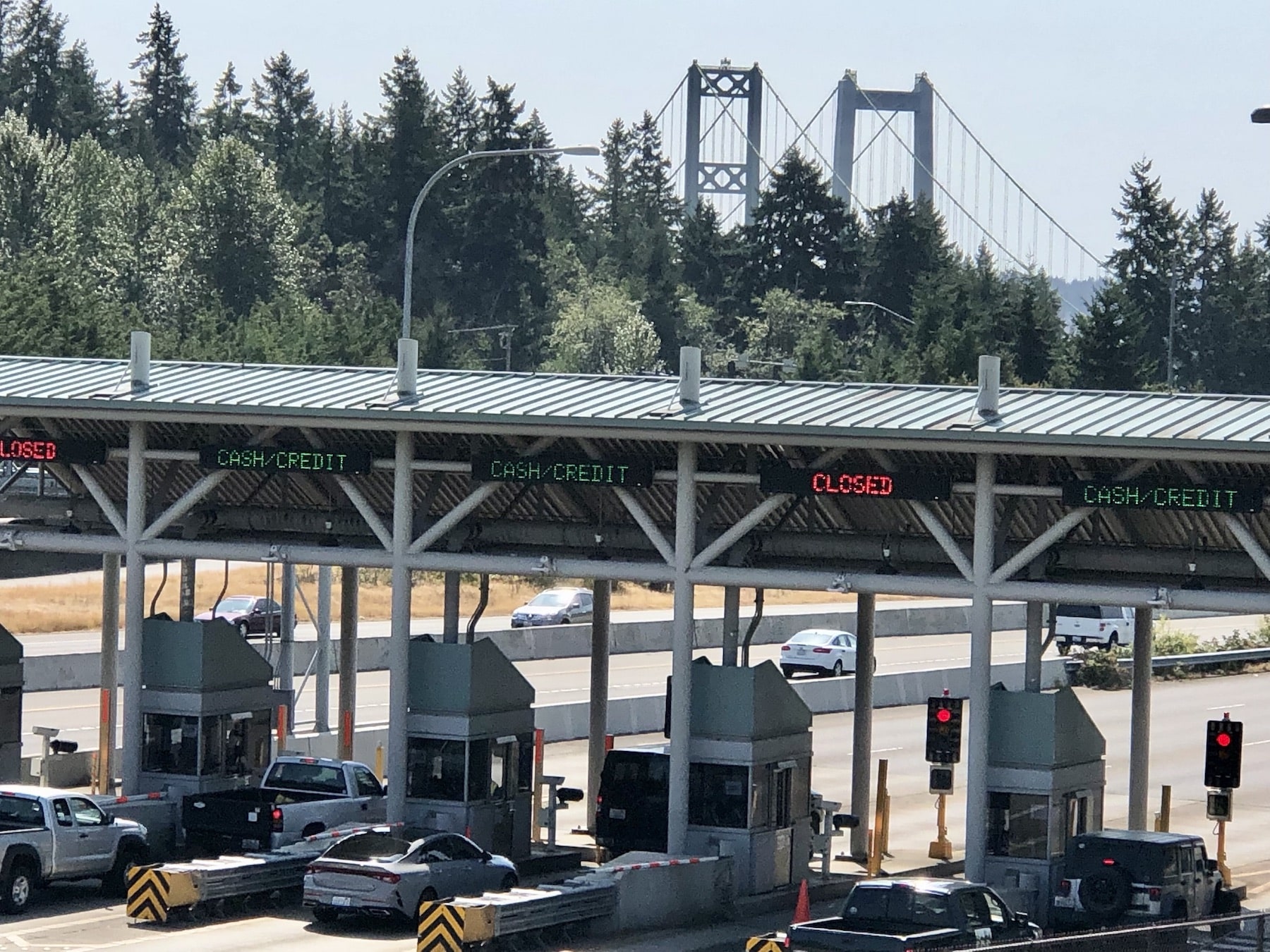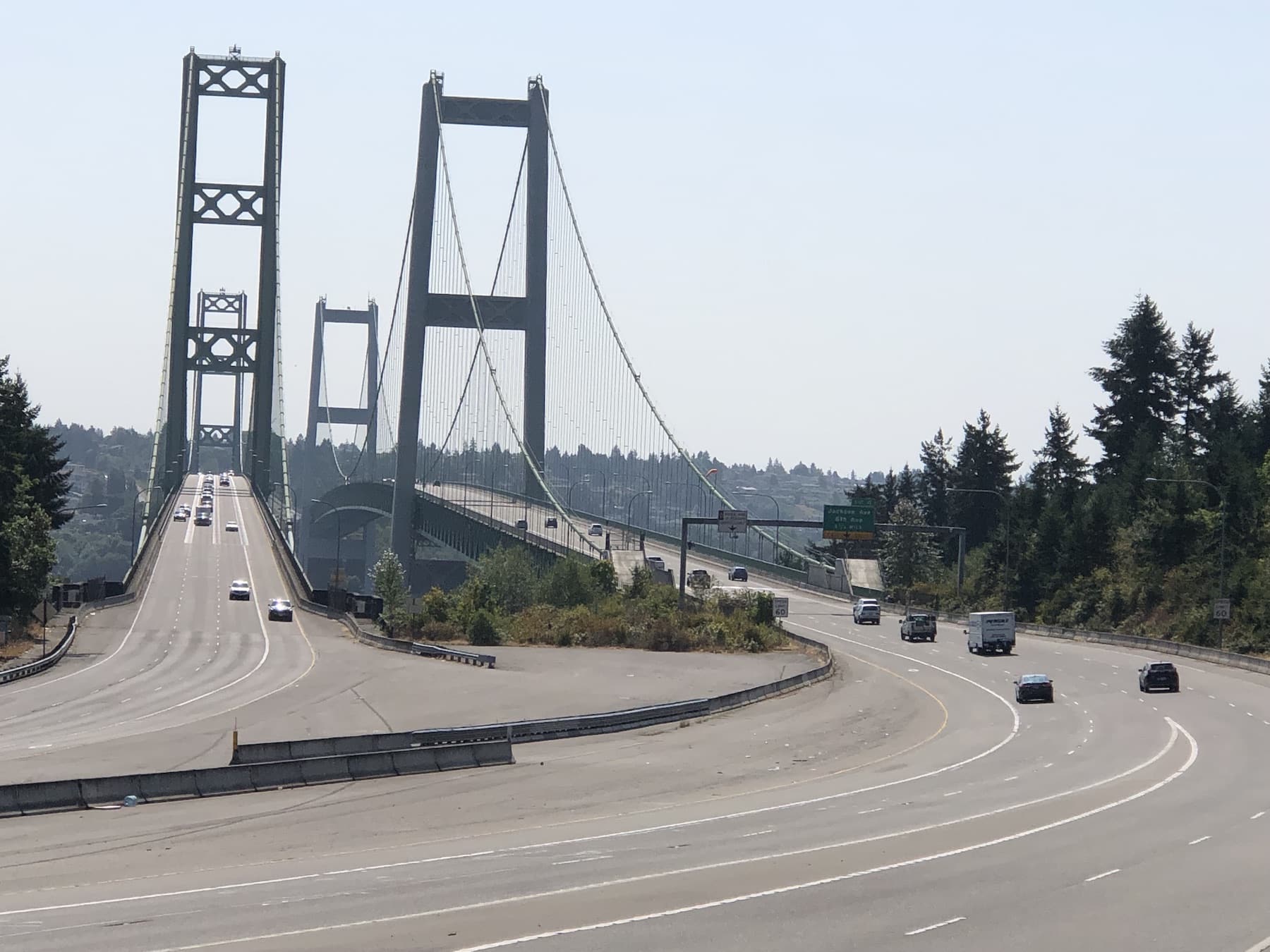Community Transportation
State approves 75-cent bridge toll reduction; more for big rigs
You get a toll reduction, and you get a toll reduction, and you get a toll reduction. Everybody gets at least a 75-cent toll reduction beginning Oct. 1 when crossing the Tacoma Narrows Bridge, the Washington State Transportation Commission authorized Tuesday during a public hearing.
State lawmakers during their legislative session in March passed Substitute Senate Bill 5488, committing to transfer $13 million per year from the general fund to the Tacoma Narrows Bridge account over the next 10 years with the intent that rates be reduced by 75 cents. Tolls would remain at that level until bridge bonds are paid off in 2032. The rates had to be implemented by the commission, the state’s toll-setting body.
The intent of Sen. Emily Randall’s original bill was to provide relief only to two-axle vehicles. A public opinion survey showed that most people preferred that all vehicles receive a flat 75-cent reduction. Instead, the commission chose a third option. It will cut tolls 75 cents for all vehicles plus an added amount per axle for trucks and trailers with three or more axles.

The cost of crossing the bridge should remain at $4.50 for most people until the bridge is paid off.
New two-axle rates will be $4.50 with a Good To Go! pass, $5.50 at the toll booths and $6.50 for pay by mail. Rates will be reduced $1.15 for three-axle vehicles, $1.50 for four, $1.90 for five and $2.25 for six or more so that all axles receive a 14% decrease.
Because 95% of transactions involve two-axle vehicles, the cost difference among the three options was relatively small. Over 10 years, the expenditure for Option 1 would be $101.3 million, $103.9 million for Option 2 and $107 million for Option 3, all well below the $130 million allotted.
Board says Option 3 is fairest
The commission preferred Option 3 because it provides the greatest immediate benefit to the most people. It includes the same benefit as Options 1 and 2 for two-axle vehicles while also supporting freight shipment, which benefits everybody. And it is consistent with statewide rate setting, said Deputy Director Carl See.
Vice Chair Debbie Young drew similarities between the bridge and the state ferry system that serves her home of San Juan County.

Chairman Roy Jennings of Clark County in Southwest Washington said tolls should be reduced the same way they are increased — proportionally.
“The reason I picked (Option 3) is because when we put on the tolls, how we did it should be how we take tolls off,” he said. “We shouldn’t just say we’re going to give one segment of the public a toll rate reduction and not everybody else. We should do it fairly as how we put them on. Plus all of the freight that goes through there.”
Jerry Litt of Grant County in Eastern Washington agreed with his peers.
“This is the most equitable way to treat a reduction and is consistent with the policies for multi-axle vehicles we already have,” he said. “I like that kind of consistency. I think this is the better way to go.”
The vote of the seven-person volunteer board was 4-0. Two members were excused and one had technical problems during the online meeting.
Language changed before bill became law
The original bill stated a goal of “maintaining two-axle toll rates at no more than 75 cents lower” and that “the intent shall not be construed to mean that toll rates for vehicles with three or more axles should be reduced.” Randall, D-Bremerton, said she was targeting working families, not freight.
The approved final language instead says: “it is the intent of the Legislature that the commission will adjust tolls accordingly.” The commission requested the change to enable it to adjust tolls to ensure that debts are paid. Default on the construction bonds could affect rates for future projects.
The 2022 Legislature intended that the rates remain at 75 cents until 2032. The law doesn’t guarantee it, however, and future legislatures would need to uphold the 75-cent rate.
More than 13,000 people completed an online survey to rate the three options from most preferred to least preferred. The most preferred in a close tally was Option 1, at 36.5%. Most respondents (89.7%) ranked Option 2 as either their most or second most preferred. Option 3 finished last.
Citizens advisory committee
Randy Boss of Gig Harbor, the only member of the public to speak at Tuesday’s public hearing, told the commission that the bill doesn’t state that it can adjust tolls. The bill only shifts $13 million per year from the general fund to the Narrows Bridge account. And if the rates change, the citizens advisory committee would have 21 days to weigh its proposal.
The advisory committee (CAC) is a governor-appointed, nine-member group comprising permanent residents of the bridge area. State law requires the advisory committee to recommend toll rate changes to the commission. The commission isn’t required to follow them.
Most of the members, however, have left and not been replaced. Only Boss and one other remained, and they were terminated on Jan. 3 by Gov. Jay Inslee, who stated that he’s resetting the committee “to eventually renew its work with refreshed perspectives.”
“Nowhere in (the bill) does it say we’re going to reduce toll charges by 75 cents,” Boss said. “In order for them to change tolls, which is what this hearing was about, they have to go to the citizens advisory committee.
“People who vote on the toll rates were tricked into thinking that people on the citizens advisory committee were looking out for their best interests when they were ignored and now, poof, they’re gone.”

